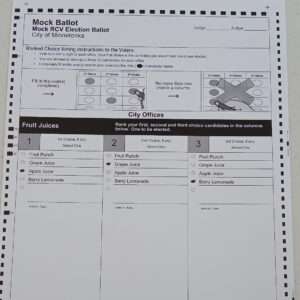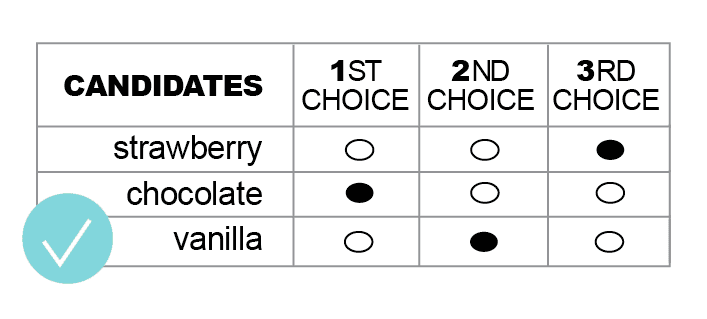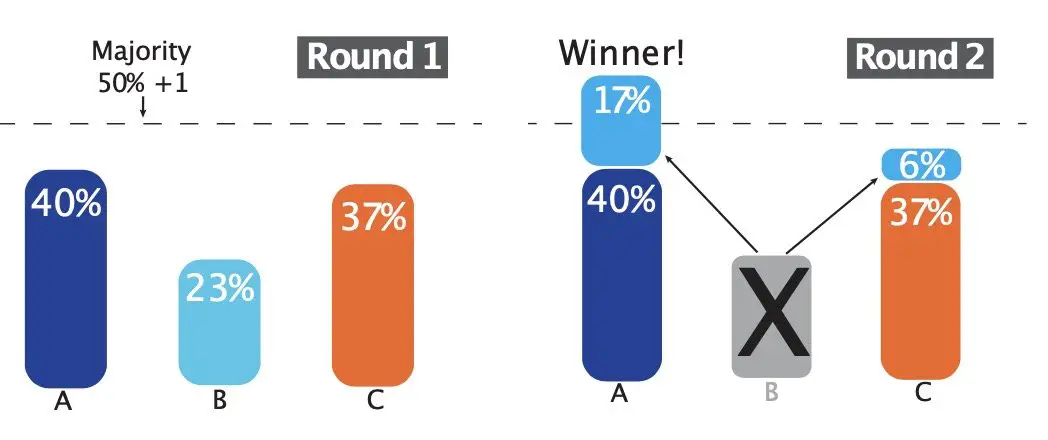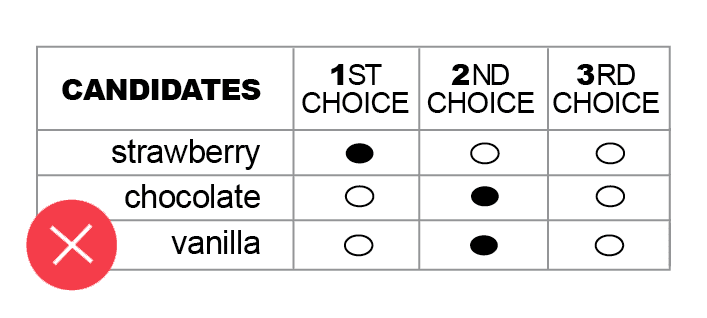Voting in the 2021 Minnetonka Election
Early Voting takes place Sept. 17–Nov. 1
Residents will be able to vote for Mayor and At-Large A and At-Large B seats on a Ranked Choice Voting (RCV) ballot and school board seats in their school district (not RCV).
While Minnetonka typically has high voter turnout during even numbered years, odd year elections generally have a low turnout (20% or less of registered voters).
Be sure to vote, so that you can have a say in who your elected officials will be.
Voter Registration may be done online, by mail or in person. To find the option best for you — or to check your voter registration information — visit the Minnesota Secretary of State’s page here: https://www.sos.state.mn.us/elections-voting/register-to-vote/
-
-
- Minnetonka City Hall, 14600 Minnetonka Blvd.
- Sept. 17–Nov. 1, Monday–Friday, 8 a.m.–4:30 p.m.
- Direct balloting: Beginning Tuesday, Oct. 26, voters can place their ballot directly into the tabulator.
- This does NOT include mail-in ballots.
- Extended hours: Saturday, Oct. 30 (10 a.m.–3 p.m.) and Monday, Nov. 1 (8 a.m.–5 p.m.
- Direct balloting: Beginning Tuesday, Oct. 26, voters can place their ballot directly into the tabulator.
-
- Complete an absentee ballot application form.
- Applications can be scanned and emailed to [email protected] or mailed to Hennepin County
- Hennepin County Government Center
300 South 6th St MC 012
Minneapolis, MN 55487-0012
- Hennepin County Government Center
- When you receive your ballot, read the instructions carefully.
- You will need a witness when you vote and complete your ballot. The witness can be either a registered Minnesota voter or a notary.
- Return ballots promptly to ensure they are received before Nov. 2. Your ballot will not count if it is received after Election Day.
- Mail-in ballots can be dropped off with city elections staff or an election judge during in-person absentee voting hours.
- Mail-in ballots cannot be placed directly into the tabulator. They can be dropped off with an election judge, or we can spoil your mail-in ballot and you can fill out a new absentee application and ballot.
- On Election Day, mail-in ballots can only be dropped off at City Hall by 3 p.m. Do not bring mail-in ballots to your polling location.
- Ballot envelopes will be reviewed for completeness before they are accepted.
- Vote in-person at your polling place
- Voting hours and registration
- 7 a.m. to 8 p.m.
- If you’re in line at 8 p.m., you’re allowed to vote.
- Learn how to register at the polls.
Ranked Choice Voting
RCV information used on this site was obtained from https://www.rcvresources.org/how-it-works and https://www.minnetonkamn.gov/government/elections/ranked-choice-voting
For the Minnetonka city council elections, voters will be able to rank up to 3 candidates. Voters are not required to rank 3 candidates for a ballot to be valid. There are 5 candidates running for each at-large seat.

Voters rank their choices in order of preference – 1st choice, 2nd choice, and 3rd choice.
1. Select a first-choice candidate by completely filling in the oval next to the candidate’s name in the FIRST CHOICE column.
2. If you have a second-choice candidate, completely fill in the oval next to that candidate’s name in the SECOND CHOICE column.
3. If you have a third-choice candidate, completely fill in the oval next to that candidate’s name in the THIRD CHOICE column.
- Make only one choice per column.
- Do not skip columns.
- You may rank as few candidates as you would like.
- You may rank as many candidates as are allowed.
EXAMPLE 1:

Correctly marked ballot, on which voter has indicated a 1st, 2nd, and 3rd choice.
EXAMPLE 2:
Overvoted 2nd ranking where 1st choice is marked correctly, two candidates are marked for 2nd choice, 3rd choice is not marked.
How this voter’s ballot will be counted:
- The first choice will be counted.
- The second choice vote will not be counted – voter’s intent cannot be determined because this column has been overvoted
EXAMPLE 3:
Duplicate ranking where the same candidate is marked for 1st, 2nd, and 3rd choices.

How this voter’s ballot will be counted: The first choice will be counted. If the first-choice candidate is eliminated, the second and third choices cannot be considered, as they are duplications.
In RCV elections, a candidate wins when they achieve more than 50% of the votes. If no candidate receives more than 50% in the first round, then the candidate with the lowest number of votes is removed and those votes are redistributed to the voters’ second choices. This is repeated until a candidate has more than 50%.


